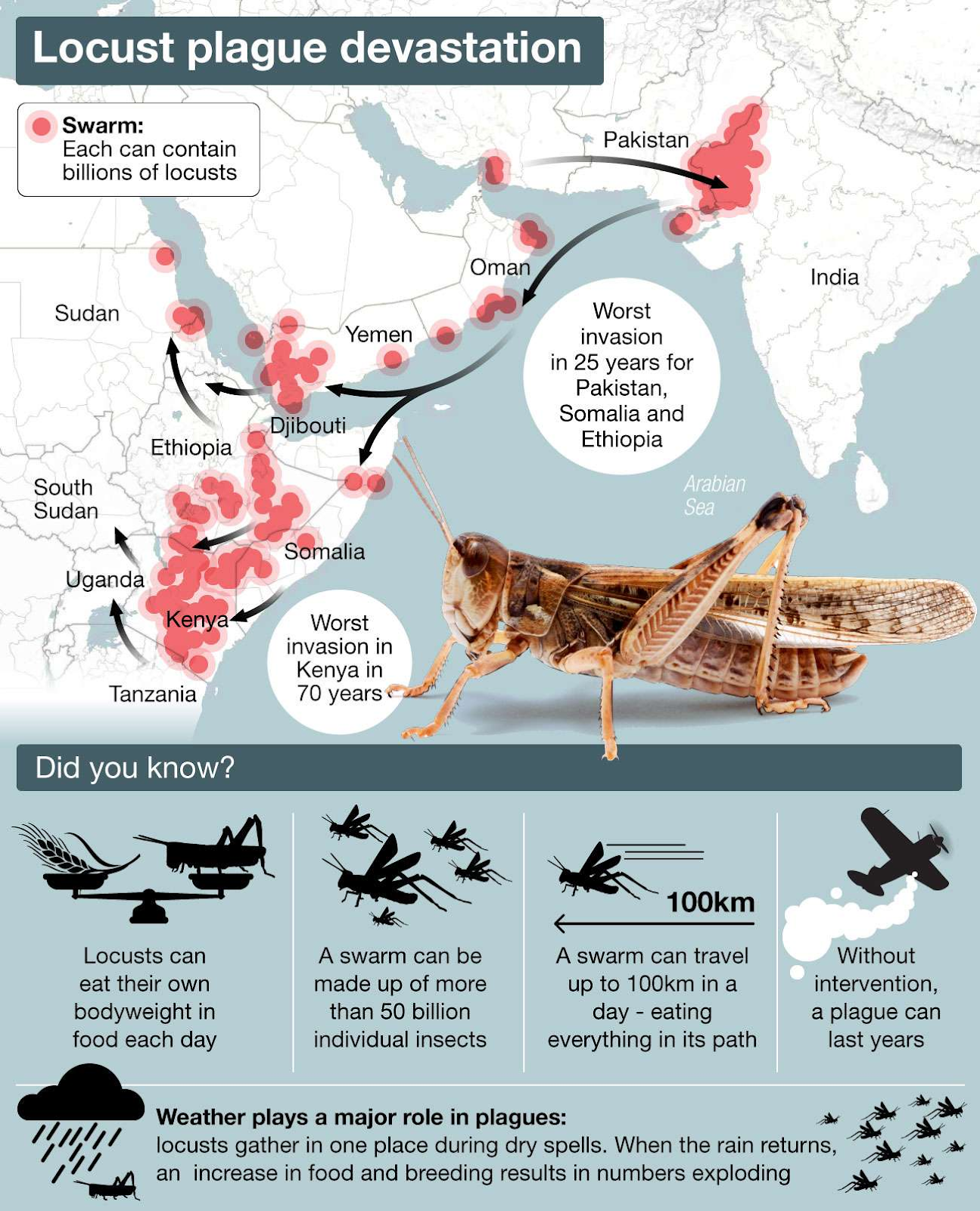Locust Swarms | 02 May 2025
A new study reveals that locust swarms are guided by a cognitive decision-making model, not random behavior. Locusts use multiple visual cues for movement, leading to coordinated swarms through decentralized decision-making. This model helps predict swarm behavior and improve early intervention strategies.
Locusts
Locusts are a type of grasshopper belonging to the family Acrididae. The Desert Locust (Schistocerca gregaria) is considered the most destructive migratory pest.
- Locusts are solitary insects until they undergo a transformation called gregarisation, where they become more social and congregate in large swarms.
- A small swarm (1 km²) can contain 80 million locusts, consuming as much food as 35,000 people in one day, while a large swarm can eat up to 1.8 million metric tons of vegetation.
- Locusts are migratory pests capable of flying hundreds of kilometers in swarms. They are a trans-border pest that travels between Africa, the Middle East, and South Asia.
- India’s Scheduled Desert Area, encompassing the states of Rajasthan, Gujarat, and Haryana, covering over 2 lakh square kilometers, is particularly vulnerable to locust invasions, which often originate from regions such as Africa and the Gulf.
- Desert Locust (Schistocerca gregaria), Migratory Locust (Locusta migratoria), Bombay Locust (Nomadacris succincta), and Tree Locust (Anacridium sp.) are reported in India.
- India's Locust Warning Organization, along with 10 Locust Circle Offices in Rajasthan and Gujarat, monitors, surveys, and controls desert locusts in coordination with state governments in the Scheduled Desert Area.
| Read more: Swarm of Desert Locust |

